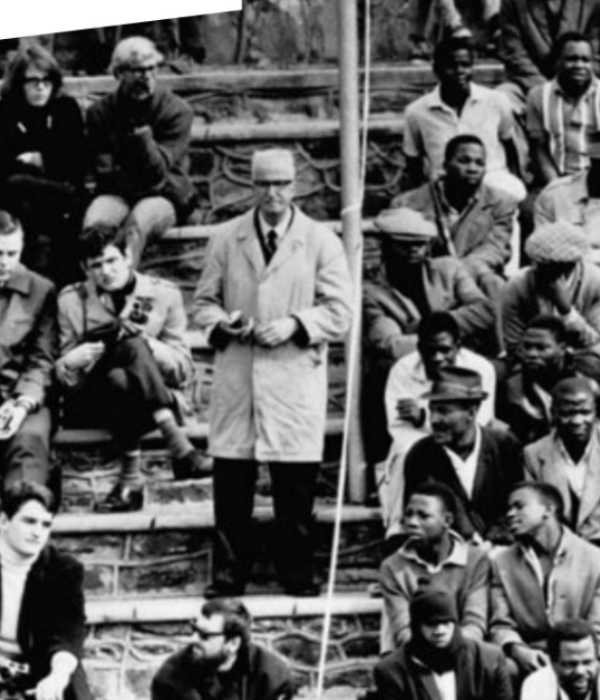October 4, 1975, Windhoek, South West Africa, now Namibia. At Suidweis Stadion, there’s a
friendly match. About six thousand spectators came to see it. They have entered through separate
entrances and are seated on opposite sides of the bleachers. The blacks are in the east curve, the
whites are in the central grandstand. Division for those people is everyday reality too. In fact, there
is apartheid in that place, as in neighboring South Africa, the country that administers Namibia.
Divided schools, different public baths, but also different sporting competitions, so much so that in
football there are three of them, for whites, for blacks and for coloureds, people with mixed
ancestry. Who wins the championship of the “whites” participates in the top league of South Africa.
Not that day though. On the field, for the first time in the History of that part of the world, a team of
whites and one of blacks face off. The whites are mostly of German or Anglo-Saxon origin, are
captained by Hasso Ahrens and have Peter Radecke as goalkeeper, who will also play in Germany
and will be coached by Bernd Brehme, Andy’s father. The blacks have their champion in Albert
Tjihero, number 5 on his shoulders like his idol Franz Beckenbauer. It will be a close but not bad
match, and, for the record, the match will end 3-3, with a missed penalty by the blacks in the last
minutes. The final score satisfy both teams and open a road. Two years later – on February 10, 1977
– Dieter Widmann, a young German coach and professor, will try again by organizing a friendly
match between the two teams he coached: the “African stars” and the team of the school where he
taught. In the same year, the first single championship was organised, without distinction based on
skin colour. In 1989, in the official debut of the newly formed national team of the country, whites
and blacks play together. And in 2015, 40 years later, the protagonists of the historic match met
again. The organizer of the meeting was the tycoon Manfred Goldbeck, who in 1975 was among
those 6,000 who watched the world change through a leather ball.
